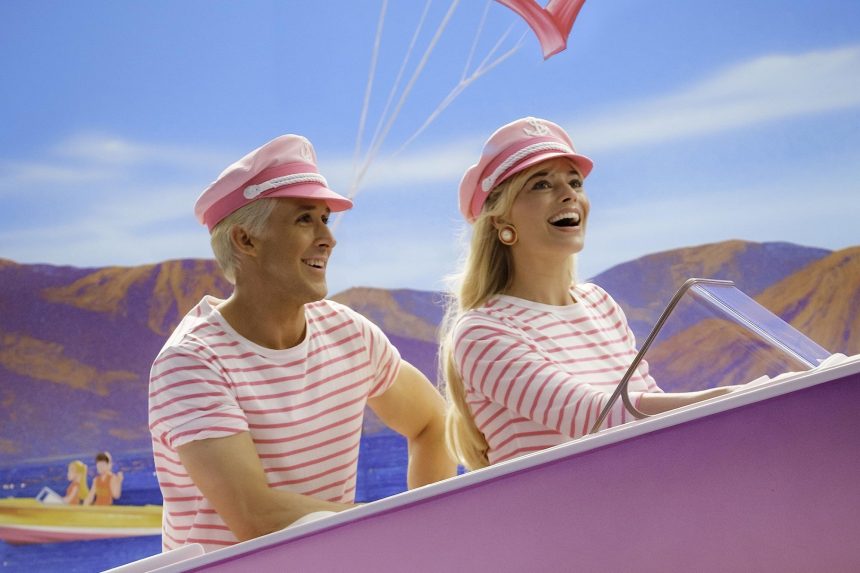Barbie, the iconic doll that has captured the hearts of millions worldwide for over six decades, was created by businesswoman Ruth Handler, the co-founder of Mattel.
Barbie was inspired by Ruth’s observation that her daughter enjoyed playing with paper dolls representing adult women. Ruth envisioned a three-dimensional adult-like doll that would empower girls to imagine and role-play different professions and aspirations.
The first Barbie doll debuted at the American International Toy Fair on March 9, 1959, in New York City, instantly gaining popularity and sparking a cultural phenomenon.
Over the years, Barbie has evolved to embrace diversity, representing various ethnicities, professions and body types while remaining a symbol of inspiration, creativity and limitless possibilities for generations of children worldwide.
Related: What the ‘Barbie’ Movie Can Teach Businesses About Effective Multicultural Marketing
‘Barbie’ debuted on July 21, 2023, to a historic $162 million opening weekend domestically, coming in way ahead of the anticipated $90 million to $110 million and, perhaps even more remarkably, surpassing its $146 million production budget.
But that’s not why you’re here. You’re here because you’ve got your marketing hat on and are wondering, “Is marketing important when launching a product or a service?”
‘Barbie’ reportedly had a $150 million marketing budget. Here’s the breakdown of some of the marketing campaigns:
While the essence of a great film lies in its storytelling, there’s no denying the impact of marketing in propelling a movie to phenomenal success. The marketing plan for ‘Barbie’ definitely paid off because ‘Barbie’ had the biggest opening weekend of 2023 at the US box office.
In the fiercely competitive world of filmmaking, creating a successful movie requires much more than just a compelling script and talented actors.
Over the years, several films have demonstrated the art of investing heavily in marketing to achieve box office triumphs and leave an indelible mark on pop culture. Let’s explore some of these movies that became cinematic juggernauts by strategically investing in their marketing campaigns.
Related: ‘Barbie’ Is Driving a Huge Surge in Vintage Car Buying Says Hagerty CEO
1. Avatar (2009)
James Cameron’s groundbreaking sci-fi epic, “Avatar,” took the world by storm and revolutionized how movies were made and experienced. With an estimated budget of $237 million, the film’s marketing campaign spared no expense. Avatar couldn’t rely on brand (franchise) recognition to sell tickets, so it came up with an innovative promotional strategy:
- Imax 3-D screening of the film on 130 screens (16 nonsequential minutes) to raise awareness about the new 3-D technology for four months before the film’s debut.
- A video game trailer.
- Mattel action figure set.
- Partnerships with McDonald’s, Coke, LG and Panasonic.
The efforts paid off as “Avatar” became the highest-grossing movie ever, earning over $2.8 billion worldwide.
Related: From an Airbnb Stay at Barbie’s Malibu DreamHouse to Frozen Yogurt Flavors and Park Benches—The ‘Barbie’ Movie Team Is Going All In on Marketing
2. The Avengers (2012)
Marvel Studios’ “The Avengers” was a cinematic event that brought together Earth’s mightiest heroes in a colossal ensemble spectacle. Marvel’s marketing team meticulously laid the groundwork for this epic team-up, starting with individual character films like “Iron Man,” “Captain America” and “Thor.”
Marvel orchestrated a 5-year marketing plan by planting seeds for the all-star “The Avengers” movie in its preceding global hits:
- Iron Man (2008) – gross revenue of $585 Million
- Thor (2011) – gross revenue of $449 Million
- Captain America (2011) – gross revenue of $370 Million
If even one of the prior films had flopped, it is likely that “The Avengers” film would not have happened. The result? “The Avengers” became the first film to gross over $1 billion without the help of a re-release.
Related: The ‘Barbie’ Movie May Have Caused A Global Pink Paint Shortage
3. “Jurassic World” (2015)
Revisiting the beloved “Jurassic Park” franchise after a long hiatus was risky. Universal Pictures, however, made sure “Jurassic World” was a roaring success. With a substantial marketing budget, the studio launched a nostalgia-driven campaign that honored the original while presenting fresh, exhilarating content:
- JurassicWorld.com — designed like a park, including an interactive map, camera installations and digital tour of attractions.
- Jurassic World Youtube channel — corporate/educational videos about the park’s staff, videos by Simon Masrani, park founder, on the park philosophy, and collaborations between lead actor Chriss Pratt and prominent YouTube channels.
- Shazaam app partnership — turned posters into dynamic content.
The film’s marketing campaign paid off spectacularly, becoming the first movie to gross over $500 million worldwide in its opening weekend.
4. “Deadpool” (2016)
“Deadpool” defied conventional superhero movie norms by embracing its R-rated nature and quirky humor. Ryan Reynolds, who played the titular character, played a significant role in the film’s marketing success. He actively engaged with fans on social media, shared witty promotional material, and even took part in offbeat marketing stunts, like posing as a faux bear for a Russian travel show. Some of the unconventional marketing campaigns:
- The Emoji Billboard – AdWeek described the billboard as “So Stupid It’s Genius.”
- Valentine’s Day prank – jokingly released as a romantic comedy.
- Marketing on Tinder – users would match with Deadpool on the dating app.
- 3 Hours of Ads – Spike, MTV, and VH1 advertised nothing but Deadpool for 3 hours straight.
The unconventional approach worked wonders, and “Deadpool” became the highest-grossing R-rated film ever.
The success of these movies is a testament to the power of marketing in the entertainment industry. By wisely investing in strategic and innovative promotional campaigns, studios were able to capture audiences’ imaginations and generate unparalleled box office returns. Beyond their compelling stories and visual splendor, these films are shining examples of how marketing can elevate a movie from merely successful to a cultural phenomenon.
Read the full article here










